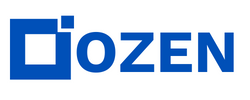How to Import an EDB File into Ansys Q3D
Hello everyone, this is Adel from Ozen Engineering, Inc. In this video, I'll show you how to import an EDB file into Q3D.
Steps to Import EDB File
- Go to File > Import > EDB.
- Select the EDB file you want to import and click Open.
- The EDB file will open in HVSS 3D layout.
Adding a Solution Setup
- Right-click on Analysis and select Add HVSS Solution Setup.
- Click OK twice to confirm.
Exporting to Q3D
- Right-click on Setup One.
- Go to Export and select Q3D model.
- Rename the file if needed and save it.
- Go to File > Open and select the Q3D file to open it.
Changing the Model
- Change the model to Appappa Media.
- Click toll obtr to finalize the Q3D design.
Advantages
The advantage here is that we already have the materials, and it automatically recognizes the nets. We have the Amplifier Datanote and the main resource, currently our Open Bot, higher up and over versions.
Additional Notes
Note that HVSS 3D layout users are very continued users since we package the first animations. What it does is chase the optimization using types it calls on that bubbles. If we're using an algorithm setup like aUROS, all sorts of tools work. For example, if you were using a training module, it automatically exports what it sees as the mesh.
Adjusting the Mesh
- In the HVSS 3D layout, double-click on Setup One.
- Select the Advanced tab.
- Modify the number of sites as needed.
- Click OK and export it again to Q3D.
Thank you for watching, and see you in the next video!
Hello everyone, this is Adel from OSA Engineering. In this video, I'll show you how to import an EDB file into Ansys Q3D. To start, go to File > Import > EDB. Select the EDB file you want to import and click Open. The EDB file opens in HVSS 3D layout. To proceed, add a solution setup.
Right-click on Analysis, select Add HVSS Solution Setup, then click OK, OK. Now, if you right-click on Setup One, you can go to Export and then select Q3D model. Rename the file and save it. To open the Q3D file, go to File > Open, select the Q3D file, and open it.
Next, change the model to Appappa Media. Click on Tool Options, and now you have your Q3D design. The advantage here is that you already have the materials, and it automatically recognizes the nets.
You have Amplifier Datanote here and the main resource currently, our Open Bot higher up and over versions. Note that HVSS 3D layout users will benefit from this.
For example, big server files or the server gets Yamaha BG Potts tools, so they are very continued users since we are packaging the first animations. What it does, however, is chase the optimization using things called bubbles.
But if you're using an AUROS setup, which you can enable now, it'll automatically take out all sorts of tools that work. For instance, if you were using a training module, it'll automatically export what it sees as the mesh.
So, if you want to adjust the number of sites on the via, go back to HVSS 3D layout, double-click on Setup One, select the Advanced tab, and modify the number of sites. Then click OK and export it again to Q3D. That's it. Thanks for watching, and see you in the next video.


![Ansys-elite-channel-partner-horizontal-reversed[1]](https://www.ozeninc.com/uploads/2022/06/Ansys-elite-channel-partner-horizontal-reversed1.png)